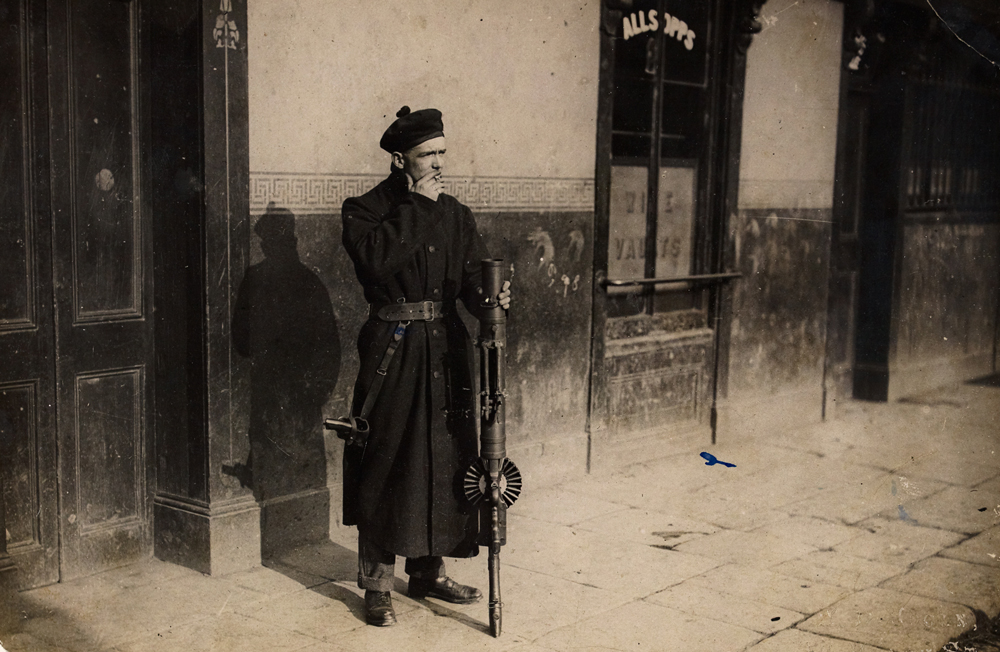Explainer: Who were the Black and Tans and the Auxiliaries?
By Alyson Gray
The Black and Tans and the Auxiliaries were part of the British crown forces in Ireland (which also included the Royal Irish Constabulary (RIC), the Dublin Metropolitan Police (DMP) and the Ulster Special Constabulary) and both groups were recruited during the War of Independence to supplement the regular police division.
From the beginning of the conflict in January 1919 to its end in July 1921 an undeclared state of war existed across Ireland between the Irish Republican Army (IRA) and the forces of the British crown. As war was never officially declared, and a countrywide state of martial law was never brought in (martial law was declared in December 1920, but it only applied to certain counties), the military was confined to a supporting role and the RIC were charged with the task of restoring law and order and curbing the actions of the guerrilla units of the IRA.
In response the IRA began a campaign of intimidation against the RIC. This campaign took several forms. In August 1919 Sinn Féin issued instructions to its members to avoid interactions with any members of the force, a strategy in keeping with a Dáil Éireann decree of 10 April 1919, that all English forces in Ireland be ‘ostracised socially by the people of Ireland’.
As the war ramped up violence towards RIC constables became more present. In a 12-month period, ending in December 1919, the IRA killed 18 policemen. Six months later, by the summer of 1920 the number of dead policemen had more than doubled. Simultaneously, the IRA began attacking police barracks throughout the country, which forced the closure and evacuation of many of the smaller, more remote barracks.
The RIC was not equipped with the weapons or training to deal with these attacks and needed support. The British government responded to this by creating two supplementary police forces: the Black and Tans and the Auxiliaries.
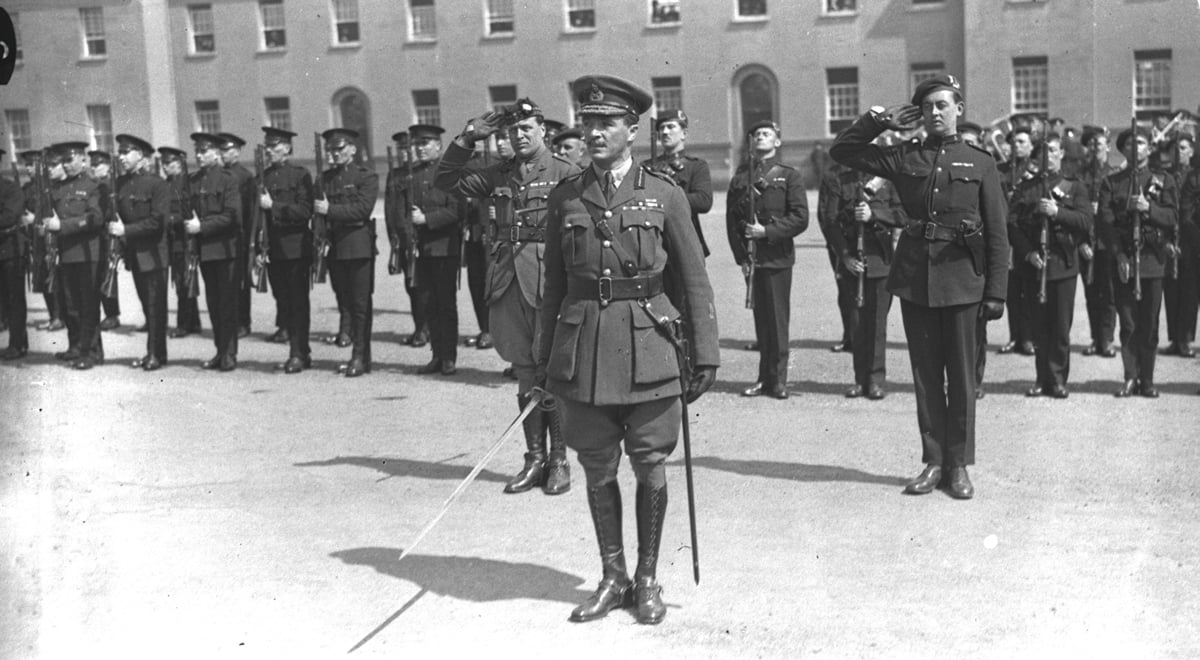
Major-General Tudor standing in front of the Royal Irish Constabulary on the left and Black and Tans on the right at the Phoenix Park depot in 1920. (Image: RTÉ Archives, 0508/026)
The Black and Tans
The Black and Tans were constables recruited into the RIC force
during the War of Independence. Membership was made up of
unemployed rank-and-file ex-servicemen who had fought in the First
World War. They were recruited from all parts of the United
Kingdom, but mostly came from Britain.
Recruitment began in January 1920, with the first set of reinforcements arriving in Ireland soon after and distributed to barracks across the country to serve alongside the traditional RIC. Approximately 10,000 men were recruited for the force throughout the conflict.
At first they wore improvised uniforms which were a mixture of items from the RIC and the British Army. The RIC uniform was dark green but appeared to be black and the army uniform was khaki – these ‘black and tan’ colours led to their nickname. They eventually switched to wearing traditional RIC uniforms.
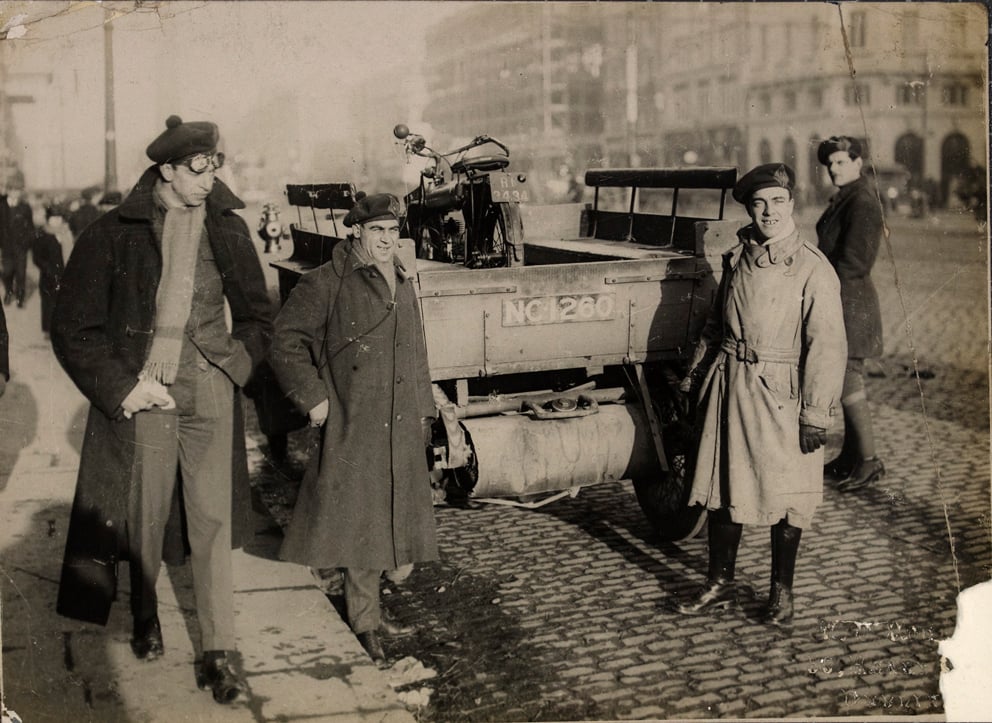
|

|
Left: Three Auxiliaries on Henry Street, Dublin. Right: Auxiliaries with a captured motorbike in Dublin. (Images: National Library of Ireland, HOGW 123 & HOGW 128)
The Auxiliaries
The Auxiliaries, officially known as the Auxiliary Division of the
Royal Irish Constabulary (ADRIC) was a paramilitary unit of
Ireland’s regular police force, the RIC. They are also
sometimes known as the ‘Auxies’.
The Auxiliaries were an elite counter-insurgency corps drawn from
ex-commissioned military officers who served during the First
World War. As they were classed as officers they were paid
accordingly – the £1 a day they received was more than
twice the rate of an RIC constable. The ‘Auxies’ acted
as a mobile striking force and raiding group against the IRA.
The first recruits to the ADRIC arrived in Ireland at the end of July 1920, after a six week training course in The Curragh, they became operational in September. The Auxiliaries wore a similar uniform to the Black and Tans but had their own insignia and wore Balmoral caps. 2,200 men saw action with the Auxiliaries during the War of Independence.
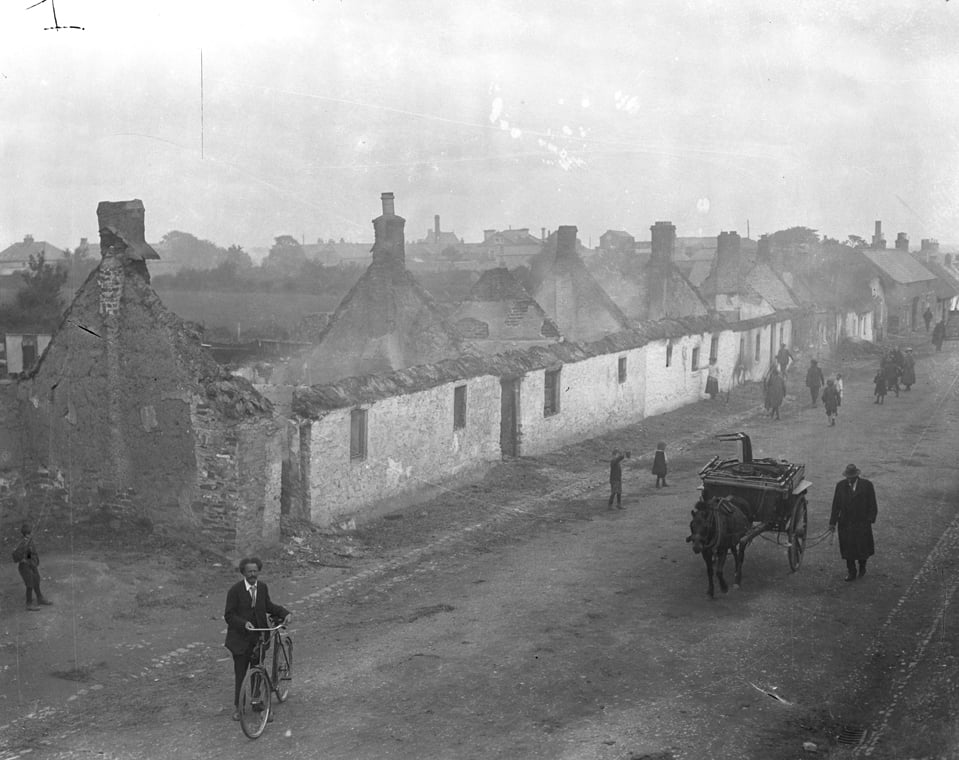
|
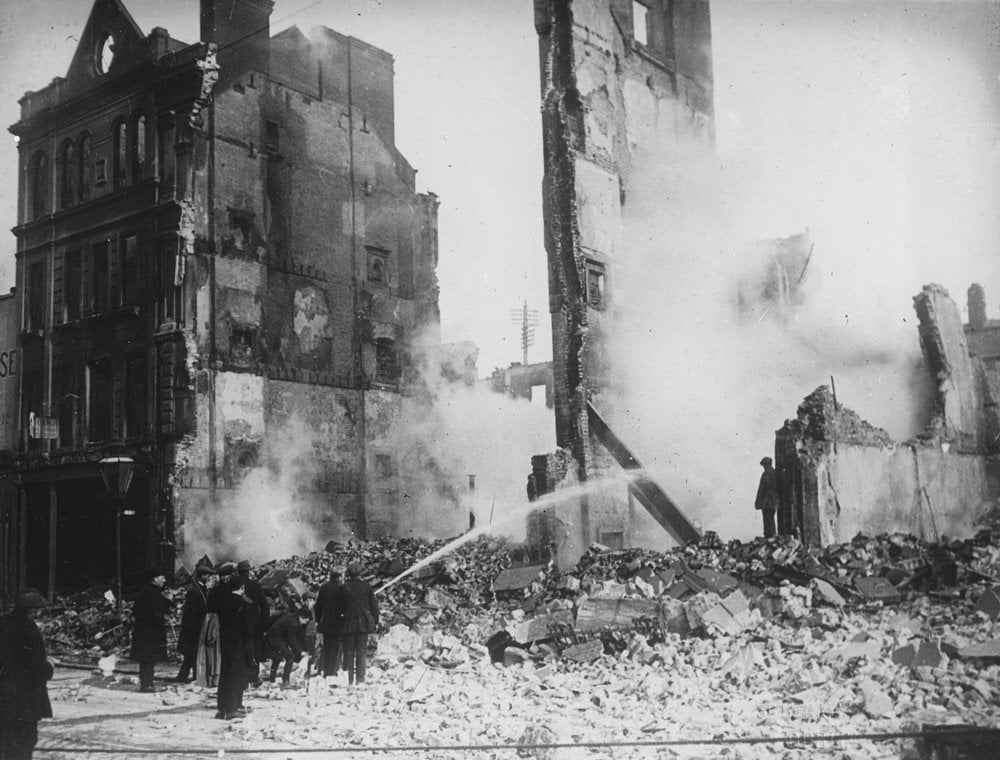
|
Ruins from reprisal attacks. Left: Balbriggan after the sack of the town in September 1920. Right: The remains of Roche's Stores in Cork city, with only one wall left after the burning of the city in December 1920. (Images: RTÉ Archives, 0505/076 & 0501/017)
What impact did they have?
Both the Black and Tans and the Auxiliaries were notorious for
their violence and became known for their method of reprisal for
attacks made upon them and their RIC colleagues.
One of the most notorious incidents of this was the Sack of Balbriggan on 20 September 1920, in which a group of Black and Tans, based at the nearby Gormanston barracks, attacked the north county Dublin town: they destroyed a number of homes and businesses and shot two IRA suspects, in reaction to the shooting of RIC District Inspector, Peter Burke. This action became a pattern for the Black and Tans throughout the war. The destruction of property and attacks on civilians became a regular occurrence.
The Auxiliaries meanwhile, were not particularly effective as a counter-insurgency force and often found themselves open to attack. On 28 November 1920 an Auxiliary police patrol was ambushed by the IRA at Kilmichael, Co. Cork, resulting in the deaths of 16 members of a 17-man patrol. Several weeks later, on 11 December another patrol was ambushed in Cork – later, much of the city of Cork was burned in reprisal. An Auxiliary cadet was also held responsible for the murder of Catholic priest Thomas Magner from Dunmanway, Co. Cork on 15 December 1920.
It was ill-discipline and indiscriminate acts of this nature that attracted international scrutiny. The British Labour Party published a report based on an investigation carried out by a specially appointed commission, which drew attention to the lack of discipline in the two forces, stating that the Auxiliaries ‘inspired terror as the authors of reprisals whose brutality and destructive effects were only equalled by the skill and forethought with which they had been planned.’
A report published in 1921 by the American Commission for Relief in Ireland, the membership of which included members of congress and other high-profile politicians and public figures, compared the Black and Tans to ‘lynch mobs’, saying that ‘decent folk everywhere are shamed and scandalised that such things can still be in their day and generation.’
READ: Report of the Labour Commission to Ireland & the Report of the American Committee for Relief in Ireland via Internet Archive
Both reports drew attention, not only to acts of large-scale destruction and murder carried out by the two forces, but also to brutal assaults, arson, theft, looting, drunkenness and intimidation. The Report of the Labour Commission to Ireland put it bluntly: ‘Things are being done in the name of Britain which must make her name stink in the nostrils of the whole world.’
While the Black and Tans and the Auxiliaries did fulfil their purpose in bolstering the ranks of the RIC and taking the fight to the IRA on many occasions, their brutality and use of reprisals turned the civilian population more towards republicanism and as more awareness was drawn to the repressive policy in Ireland, the British government came under increasing pressure from home and abroad to settle the Irish question.
What happened once the war ended?
Both forces were disbanded in January 1922 following the end of
the war and the signing of the Anglo-Irish Treaty. While many of
the members returned to civilian life, some men remained in
policing – with some joining the newly established Royal
Ulster Constabulary.

